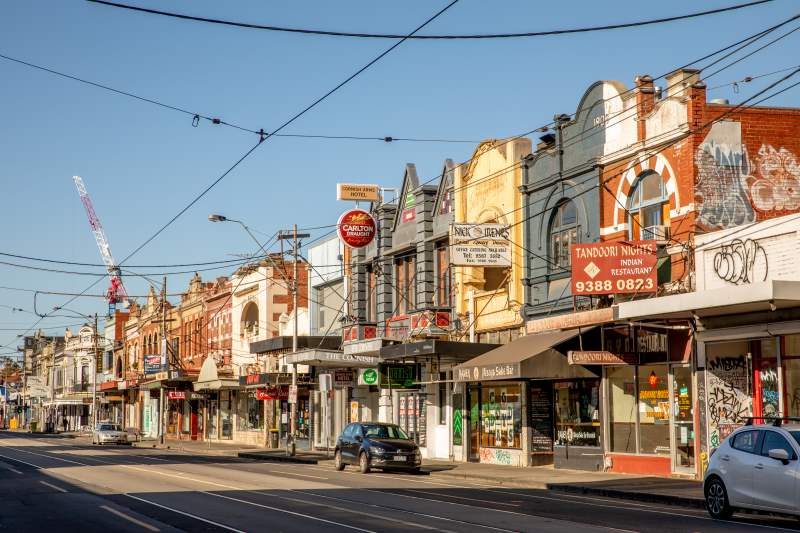
Brunswick has been shaped by numerous waves of migration, creating a proudly diverse population and a mix of enterprise and opportunity. It is valued for its culture: its people and places, neighbourhoods and open spaces, studios, music venues and galleries, cafes and bars, events and festivals, and its boundless creative energy. Reinforcing Brunswick as a hub for creatives and design excellence, is the partnership between Merri-bek City Council, Creative Victoria and RMIT, known as the Brunswick Design District1.
Brunswick is at an important point in its evolution. The extent and pace of change and development
over the past decade is without precedent in its long and colourful history. The population of the of Brunswick (suburb) grew by almost 3,000 persons over the 2011-2021 period, just short of 3,000 new dwellings were built, giving a population of almost 25,000 living within 13,000 dwellings2.
Brunswick has a long history as a place of employment and production. There are over 12,500 jobs within the project area, approximately one quarter of jobs in Merri-bek, with Business Services, Retail / Hospitality (Accommodation and Food), Healthcare, and Industry being the four largest employing industries. Professional services and creative industries are also growing sectors within Brunswick3.
Commercial space and activities generally follow the length of Sydney Road and can also be found spread throughout the streets connecting Sydney Road to the Upfield Corridor. The Sydney Road shopping strip functions as a set of smaller, overlapping centres each with a distinct role and function. One of Merri-bek’s most significant employment areas is within the Brunswick project area on the western side of the Upfield Train Line. This area contains over half a million square metres of commercial space (more than twice the size of Chadstone) and is valued as a major employment and economic generator for the region. In 2020, the Brunswick Activity Centre generated $1.3 billion of economic output, equating to 29 per cent of the municipality’s outputs.
There is a long history of community activism and engagement in Brunswick, and today there are many advocacy and action groups and engaged individuals. Council recognises the need to engage with our diverse communities and listen to their perspectives, particularly on a transformational project such as elevation of the rail line through Brunswick.
The local culture prevalent in Brunswick is one of its greatest strengths, Brunswick is place where cultural, economic, design and social experimentation flourishes and contribute to the unique character and vibrancy of Brunswick. The Upfield Corridor has acted as a barrier, separating different land uses and activities, and the project will change these circumstances.
There are several key sites near the project site in the control of Government or education providers. These include significant sites at 420 Victoria Street (formerly the Brunswick Business Incubator), 33 Saxon Street (currently known as Siteworks arts and cultural hub), 20 Dawson Street (currently a Victoria Police Depot), the Brunswick Town Hall campus and the RMIT Brunswick campus. These sites are at different stages of renewal and elevated rail will enhance the attractiveness of these sites as places of production, education and employment.





